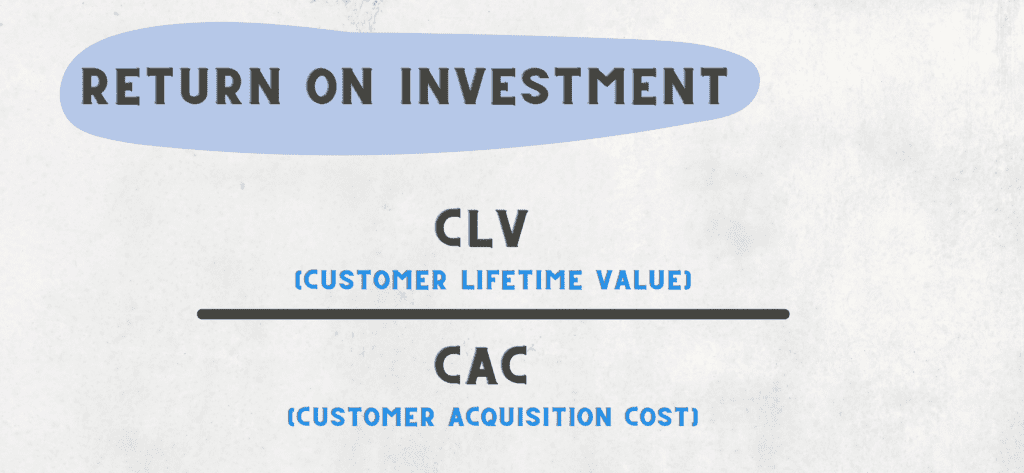A Creative Field
It should come as no surprise that marketing is a highly creative field. Print ads, social media marketing, blog posts, radio, and email marketing are just a few of the thousands of channels that exist for companies to make contact with customers. At Engenius, we spent some time researching just how many marketing opportunities existed for both inbound and outbound methods. (We lost track after 150,000).
In short, marketing teams have a lot going on at any one moment. From social media to billboard ads, they’re designing creative, creating content, and building a company’s brand visibility. Yes, marketing teams are highly creative, but creativity isn’t enough when faced with the big-picture question: “Is our marketing making our business successful?” Or, in other words, “Is our marketing working?” On the surface this question looks simple — are my marketing initiatives successful? Yes or No—— but the true answer to this question is much more complicated. To answer this question you need data, and to get data you need to know what metrics are relevant to your team and their work.
Vanity Metrics vs. Revenue-Based Metrics
While Marketing teams are highly creative, they often struggle to show success with their metrics when it comes to the hardline revenue numbers that drive business forward. Let’s use a traditional marketing example. Say I have a billboard on the side of an interstate. In one day I’ve had 10,000s of views. Sounds great right? My billboard was successfully seen by your average commuter which must mean my marketing is working, right? Views, however, are not sales. Just because someone saw my billboard doesn’t mean they immediately googled my company, and completed my desired conversion (say for instance scheduling a call with one of my sales reps). My view-count might be high, but if my leads are declining or stagnant then my marketing may not be successful.

While that’s an over-simplified example, the pain point remains the same: how do marketers define the difference between metrics that look good, yet mean nothing, and revenue-based metrics that indicate how a business is doing overall. Arguably, the people who feel that tension the most are marketing managers who have to report on their teams success to the C-suite or leadership team. Impressions, views, or other abstract measurements without context on how they lead to sales can and do feel like vanity metrics with little weight and even less credibility. When presented to individuals who are focused on the overall growth of an organization, it’s no wonder these vanity metrics fall short.
So, what numbers do matter and how can marketing present data that’s relevant to the C-suite team while also indicating what digital marketing efforts are working? The answer comes with two terms, a little math, and one critical number.
The Terms
To calculate the golden ratio for marketing. You need two numbers: Customer Lifetime Value (CLV) and Customer Acquisition Cost (CAC).
Your Customer Lifetime Value is the amount of money a customer will generate for your company over the duration of their time as a client. For organizations that offer ongoing services, a customer’s lifetime could be several years with annual revenue generated each year on top of the initial “purchase” cost. It’s no secret in the business world that it’s cheaper to keep current clients happy with your services than it is to acquire new leads. Your Customer Lifetime Value helps you create strategies to gain and retain customers.
Your Customer Acquisition Cost is exactly as it sounds — the amount of money spent to gain a new customer. The CAC includes everything from marketing initiatives and marketing spend to sales salaries and internal expenses. Essentially the CAC is the total amount of money (including salaries) spent by sales and marketing to “win” a new customer. (For step by step directions on how to calculate this number see this blog).
The Math and the Critical Number
Together, these numbers can provide critical insight into the amount of money a company spends on a new client and the amount of ROI they will see from that client. The calculation for that looks a little like this:

By dividing the CLV by the CAC you reach the ratio of dollars spent to ROI. Ideally, you want that number to be 3 or higher. Why 3? you may be thinking. A ratio of 3 indicates that for every $1 spent by your marketing team the company is making $3 to support its operations. If your ratio is higher than that, your marketing and sales initiatives are being successful and you might want to consider allocating more funds to support their lead-gen efforts to increase your bottom line. Less than that, however, and your marketing and sales initiatives are costing you more than you’re gaining from them. A 1:1 ratio, for instance, means that you’re breaking even on your investment… a place no business wants to be for long.
The Benefits
By Calculating your CLV to CAC ratio (CLV:CAC), you can understand if your overall marketing initiatives are moving your business forward. Your marketing team can then provide a hard number measuring success and can even begin calculating the success of each specific marketing channel (read more “here”). As you begin to see what has success and what doesn’t, you can make incremental improvements on your initiatives, spend money in the areas that bring the most ROI, and open the conversation with Leadership and Sales to refine your overall client acquisition strategy.
Marketing isn’t easy. It’s the process of making educated, creative guesses to see what works or doesn’t work with your clients. It doesn’t, however, have to be blind. Relevant metrics can help bridge the communication gap between the biz-dev minded C-suite and Sales team and can help you feel confident about the amazing work you do every single day.
We get it. Math is hard. Here are a few free resources to make it easier:
Free Customer Lifetime Value Calculator
Free Customer Acquisition Calculator



